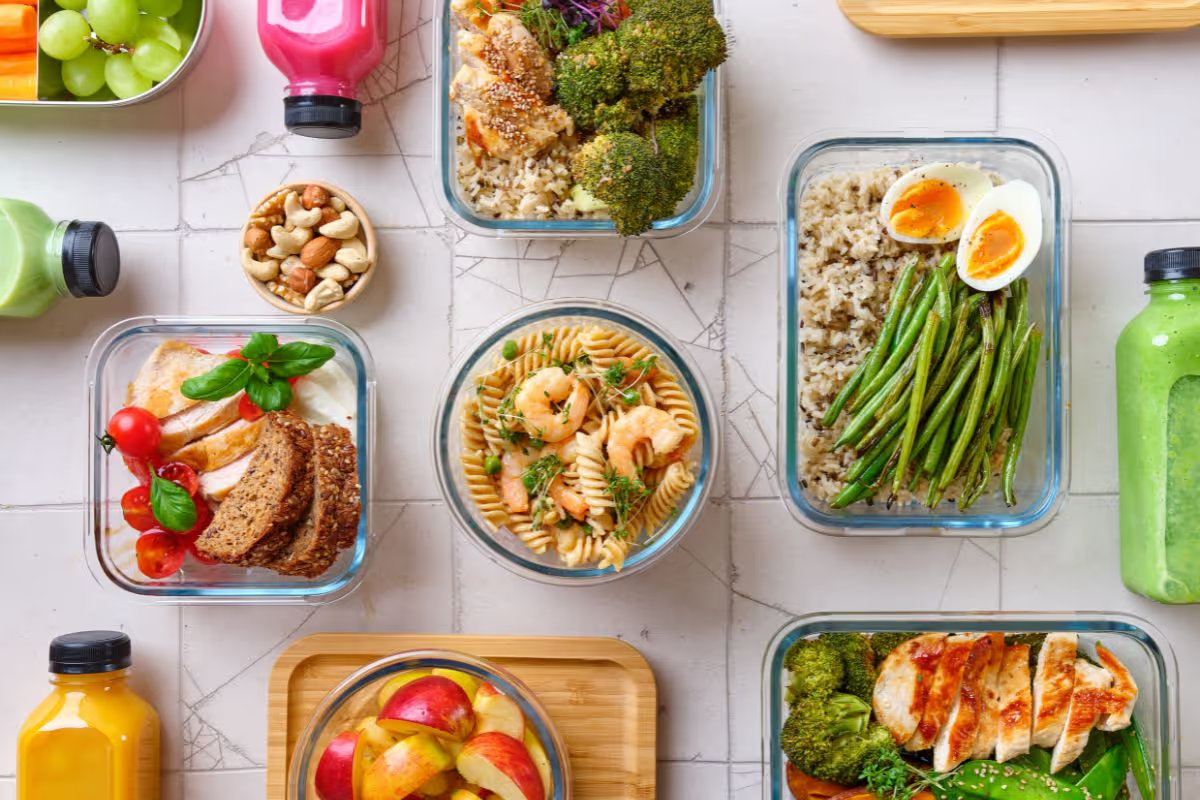Life can get a bit crazy, especially when you’re juggling work, school, and everything else that comes with being part of a busy family. Planning meals shouldn't add to your stress—it should be a breeze! With some simple strategies, you can turn what seems like a daunting task into a fun and easy routine.
Imagine this: no more frantic last-minute takeout orders or endless debates about what's for dinner. Instead, picture a week where every meal is planned, ingredients are prepped, and the family gets to enjoy dinner together without the stress of figuring out what to eat. Sounds dreamy, right?
In this post, we'll walk through five simple steps to help you create a meal-planning system that works for your family. Meal planning doesn't have to be a chore. It can be a fun family activity that brings everyone together. By the end of this journey, you'll find yourself not only saving time and money but also creating delicious memories around the dinner table that are sure to strengthen those family bonds.
Ready to dive in? Let's make meal planning your new favorite family tradition!
1. Set Aside a Weekly Planning Time

The first step to a stress-free meal planning routine is to carve out a specific time each week dedicated solely to planning your meals. This is your sacred hour, your “meal planning zen time.” Choose a day that works best for your family—Sunday afternoons are a popular choice since it's the perfect prep for the week ahead.
Gather ‘round the table or cozy up in the living room with a cup of coffee or tea. This doesn’t have to be a lonely endeavor! Make it a family affair by inviting everyone to pitch in. Pull up a calendar and consider what activities you have planned for the week. Are there nights when everyone will be home, or evenings when schedules will clash? Knowing when to plan elaborate meals versus quick and simple options makes all the difference.
During this time, start brainstorming meal ideas that excite the family. Create a fun ambiance with music or snacks to keep spirits high. Planning meals can be a wonderful bonding experience, where everyone can share their favorite dishes and try something new.
2. Involve the Whole Family in Meal Ideas
Now that you’ve set your planning time, it’s time to get everyone involved! Meal planning can be a fantastic opportunity to introduce your kids to cooking and decision-making while also accommodating everyone’s tastes.
Start by asking each family member to suggest one or two meals they absolutely love. It could be a classic like spaghetti and meatballs, or maybe pizza with crazy toppings. Encourage experimentation—if someone has a dish they’ve seen online or want to recreate, jot that down! Include a variety of cuisines; trying something from different cultures can make meals feel special and exciting.
Turn meal planning into a fun game. How about a themed dinner night? You could have Taco Tuesdays or Meatless Mondays. Create a twist like “Random Recipe Night,” where everyone gets to pick a random item from the pantry and create a dish.
Don’t forget those picky eaters! Involve them in the process by allowing them to pick sides or toppings. This inclusion not only boosts their interest in food but also gives them a sense of ownership over what they eat.
One Pass That Does It All. Get Out And Play!

3. Create a Flexible and Simple Grocery List
With a list of meals in hand, it’s time to tackle the grocery list. However, keep it easy! A detailed, complicated grocery list might seem efficient on paper but can lead to stress when you realize an ingredient is missing at checkout.
Start by breaking your grocery list into categories—produce, dairy, meats, and pantry goods. This way, you won’t be running back and forth across the store trying to piece together your shopping. As you list out ingredients, consider the versatility of each item. For example, broccoli isn’t just a side dish—it can be tossed in stir-fries, added to pasta, or top off your family’s homemade pizza.
Flexibility is key! If you notice that the store has a great sale on veggies or meats this week, feel free to swap out planned meals for something based on what's fresh or on sale. This strategy not only saves money but also ensures meals stay seasonal and tasty.
Encourage everyone to hop on a family grocery app or save the old-fashioned way with pen and paper. This way, you can easily keep track of what you need and avoid needless trips to the store.
4. Prep Ingredients Ahead of Time
Meal prepping might sound like a hefty commitment, but it can really simplify your dinner rituals. And here’s a little secret—it doesn’t have to be a marathon session! Just a little bit each week can go a long way in saving time and reducing stress.
After your grocery shopping, set aside a couple of hours or so to prep. You can wash and chop veggies, marinate meats, or even cook grains like rice or quinoa in advance. Consider utilizing party trays or containers to portion out snack-size servings of fresh fruits or veggies to keep healthy eating at your fingertips during the week.
If your family enjoys smoothies, measure out frozen ingredients in bags so they just need to be dumped in the blender. For busy weeknights, consider batch cooking meals; for example, you can double a lasagna or soup recipe, with half stored in the freezer for later!
Remember, meal prepping doesn’t require you to prepare every single meal. Just a few elements that save you time during the week will do wonders. Plus, cooking together as a family can be a fun and collaborative experience. Let the kids help mix and measure—get them invested!
5. Keep the Menu Varied but Easy to Follow

While repetition can help establish a routine, keeping your meal plan varied is crucial for a happy, engaged family. No one wants to eat Tacos again and again... even if they love them!
To maintain excitement, create a “master menu.” Discover some family favorites and rotate them. Let’s say you plan your meals for the month—mix things up by planning different themes for each day or trying out new recipes you’ve been eyeing! How about Meatless Mondays, Taco Tuesdays, or a Comfort Food Friday?
It’s also a good idea to keep a handful of ‘easy’ go-to recipes in your back pocket for those unexpectedly busy days. Think of 20-minute meals like stir-fries or pasta with store-bought sauce. What about breakfast for dinner? It’s fun and takes the pressure off since breakfast foods can be quick and simple.
Experiment with “one-pot” meals, sheet pan dinners, or slow-cooker creations. They provide a well-balanced meal with less fuss; just throw everything in one pot and let it do its thing!
Conclusion
Meal planning doesn’t have to be a source of stress. It can be a rewarding family ritual filled with creativity and joy. So gather the family, let everyone’s voice be heard, and create a meal plan that resonates with every taste bud. Just remember: it’s not just about feeding the family; it’s about fostering togetherness and joy at the dinner table.

.png)

































.svg)
.jpg)
.jpg)
.jpg)